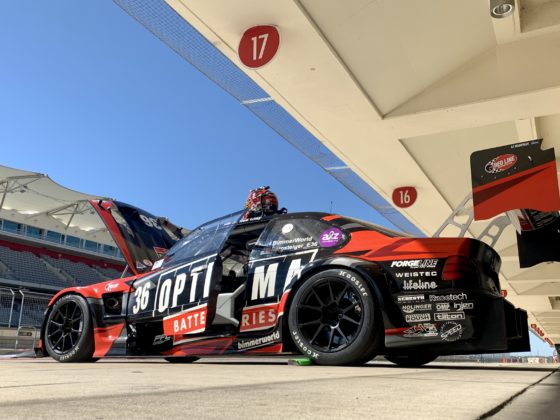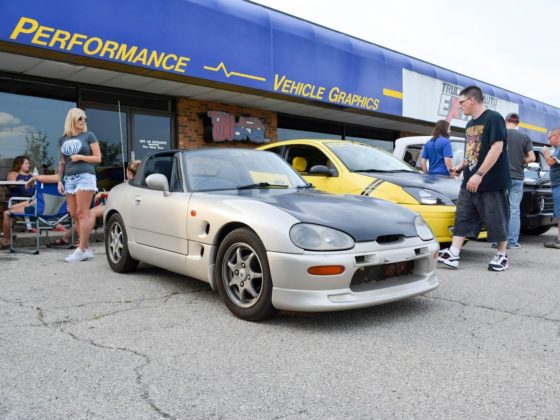
All of Icon’s shocks use high-quality teflon lined FK spherical bearings on the ends. If you didn’t know, FK bearings are some of the best sphericals available. Using bearings instead of bushings takes a lot of the side load off of the shock shafts and lets all of the suspension movement travel through the dampers instead of flexing rubber.

The Icon 3.0 shocks have an extended lower spring perch over the 2.0 shocks to make room for the additional 0.63″ of travel that the 3.0 shocks have over the 2.5 shocks. This equates to about an additional inch of travel at the wheels over the 2.5 shocks.
![]()
In case you were wondering how the dual piston 3.0 shock works, it is pretty neat. The main piston has valve stacks for compression and rebound like the conventional 2.5 shock. The main piston controls the damping under normal driving conditions. However, there is a secondary piston on an extension of the shock shaft below the main piston. Once the shock goes through about 60% of its travel, the secondary piston engages in a smaller secondary tube inside the shock body.
This starts the valve stack on the secondary piston working, in a second stage position-sensitive function. In the first zone of compression shown in the picture as yellow, at first, fluid is being bypassed by the secondary piston compression valve stack and out of 3 progressive bleeds drilled into the side of the secondary tube. As the shock travels deeper and deeper into the yellow zone, 3, then 2, then 1, and finally all of the bleeds get bypassed by the piston. This gives more and more compression damping the further into the travel you get.
Once you get past these three progressive bleed ports, you get into the final 20% of travel or the red zone shown in the illustration. Here, the only secondary fluid flow is through the secondary piston valve stack. At this point, you are getting a ton of compression damping from both the secondary piston and the primary piston. This gives a nice hydraulic cushion as you approach the end of your wheel travel and prevents hard bottoming. The shock also has special ports in the main piston that act like a hydraulic top out cushion to similarly prevent the shock from topping out harshly under full extension. These features help give a superior ride and reduce the likelihood of suspension damage in hard off-road use while not affecting the ride or handling under road or normal use.
We think the Icon 3.0 shock will not only give us a better off-road ride and more control, but we also think it will prevent hard bottoming out and help prevent the front suspension from getting bent. We hope this will protect the chassis of the truck from damage as well. We will probably also need to learn how to read the road surface better and to slow down when the surface is difficult or beyond our experience to read!
Stay tuned, we have more front suspension goodies coming. These are being added to help strengthen the front end and to reduce bumpsteer.
Sources
Icon Vehicle Dynamics



4 comments
The dual piston design looks like it would be awesome for mountain bikes, too.
What do you guys think about using an oleo damper for off-road vehicles? It seems like it would work pretty well. I know that they use them on tanks.
https://en.m.wikipedia.org/wiki/Oleo_strut
An oleo strut is a damper with a gas spring. Gas springs are progressive which may or may not be a good thing.
“Solid-spring shock absorbers, however, suffer from low efficiency,
Efficiency = A / (L x S)
where A is the energy absorbed by the strut during its stroke, L is the maximum load on the strut during the stroke, and S is the maximum stroke resulting from the maximum load.”
“ Some oleo struts contain a tapered metering rod that moves along with the piston through the center of the orifice to vary the orifice size. This continuously adjusts the rate at which hydraulic fluid enters the upper chamber, allowing a higher rate of flow at the moment of touchdown and progressively lowering flow rate as the strut reaches its point of maximum compression. This optimizes the magnitude and duration of force on the airframe due to the landing loads, spreading the force over the longest duration possible and keeping the force relatively constant over that duration.”
It seems like you could benefit from the non-linear air spring response in off-road applications. I know that someone is using an oleo damper on a MTB, but I think it’s absurdly expensive. From I heard, it can use a linear linkage, but still have significant bottom out resistance.
https://m.pinkbike.com/news/brew-nitro-shox-eurobike-2015.html
“The whole thing was due to bad judgment and a lack of off-roading experience on our part. So of course more mods were needed to improve the suspension and to strengthen the front suspension’s weak points.” I just have to laugh because that’s a very familiar rabbit hole in general.
That said, the secondary pistons are pretty darned cool – it’s not relevant to stuff I do but I love seeing valving tricks that offroad stuff (be it this kind of thing or rally) come up with to handle extreme situations.